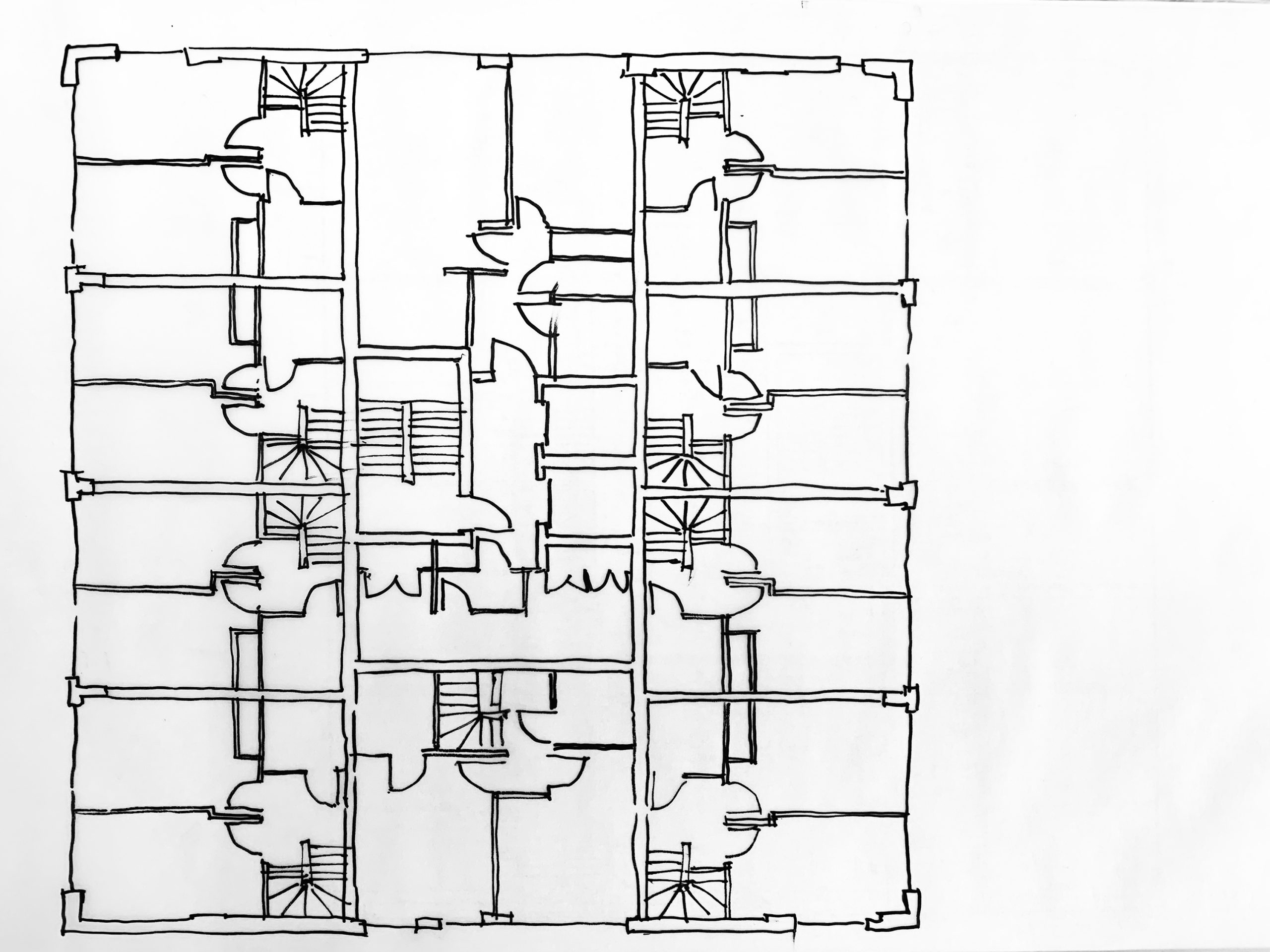Architectural Design
From concept to completion, our architecture service generally follows the RIBA Plan of work Stages 0 – 7. We work closely with our clients to develop a brief for a project, and then complete the work required to develop a fitting concept and detailed design which will acheive planning approval. We typically work on large scale commercial offices or multiple residential projects. In some unique cases, we work on small micro-sites, if we believe we can create an interesting building, with cutting edge architecture.
As a whole, our company is best equipped to understand the interpretation of our design. We complete the project management aspects of the construction work, delivering an unmatched quality control process of our designs as they are built. We greatly value fully developed engineering elements within a design, as they ensure mitigation of risks in timing, buildability and budgets, and deliver on site excellence through tangible results. Our clients receive directions on operations and maintenance of their newly built projects, ensuring our work is delivered to excellent standards through the building process and beyond.
Investment Strategy
We actively seek out value-add propositions for our clients’ properties through our Investment Strategy Service. Our Investment Strategy Service incorporates a detailed analysis of the proposed requirements, undergoing a value-add process in which we review original and projected property market values. Intelligent design and the careful allocation of space on site allows us to find ways to increase total square footage and meet overarching investment objectives.
There is also value added by increasing density and selection of materials, a building’s design comparative to its locality, and long-term gains through a range of tenancy options. Our experience, insight and detailed analysis helps strengthen your business case and investment strategy to maximise investment potential.
Sustainability
The arrangement of the axes of buildings and their parts is a device for controlling the effects of sun, wind, and rainfall. The sun is regular in its course; it favours the southern and neglects the northern exposures of buildings in the Northern Hemisphere, so that it may be captured for heat or evaded for coolness by turning the axis of a plan toward or away from it. Within buildings, the axis and placement of each space determines the amount of sun it receives. Orientation may control air for circulation and reduce the disadvantages of wind, rain, and snow, since in most climates the prevailing currents can be foreseen. The characteristics of the immediate environment also influence orientation: trees, land formations, and other buildings create shade and reduce or intensify wind, while bodies of water produce moisture and reflect the sun.

